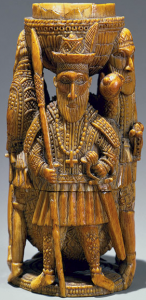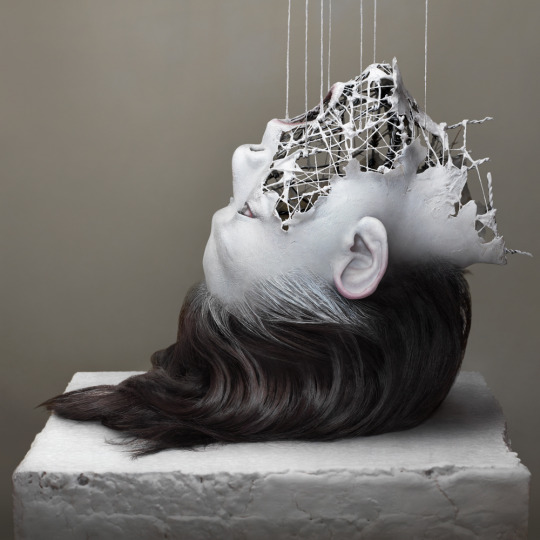Fiona – China/Porcelain
China, Saucer, c.1770-96, enamelled porcelain
18th century women in Britain, were all for porcelains wares and the demand of such goods certainly pushed the market as well as meaning of these objects, without a doubt relating to the feminine, in both fragile beauty and perhaps, being a useless display, similar to the position of the female in a patriarchal society.
The grandiose yet excessive style of chinoiserie also then, reflected the wants and needs of the consumers or housewives then, which took little heed to classic styles and merely grabbing onto certain motifs, such as the willow pattern which was inspired by chinaware imports in the early 1800s.
Interestingly, the plate itself, bridges the very idea of women as porcelain, the very thing which they indulged in, reflects back upon themselves. William Wycherley’s 1675 play The Country Wife had his character, Mr Horner making love to Lady Fidget under the guise of showing her “his china collection.” The notion of self-gratifying need for both erotic and exotic sums the conception of hoarding collections of chinoserie along with it’s sexual allusion, where consumerism and excessive desire ran rampant.
Here, a pretty saucer, adorned with the willow pattern in gold that encases a milk maid, in colour, gathering the hem of her dress as she steps over a stile. The scenery is remnant landscapes in china ware, but the European figure, exemplifies its intended audience. The imagery is suggestive enough, allowing a view of the maiden’s underskirt but there is more. Viewers are in for a treat as they flip over the plate for a full view of the maiden’s bare buttocks. The subject matter is voyeuristic in nature and curious, clearly allowing the male gaze and in light humor of the hidden “behind” that lies in the back of our minds.
Such objects were likely passed around among intimate group of friends or even lovers and contributed to the associations of chinoiserie with erotic fantasy, humour and promiscuity.
Sloboda, S. (2014) Chinoiserie : commerce and critical ornament in eighteenth-century Britain Manchester, New Hampshire: Manchester University Press
Yu Wei – Wallpapers
Refer to: link
Peng Cheng – Mirrors
18th century Chinese mirror painting at Saltram, Devon
In the 18th Century, Chinoiserie became a design agency that appealed to the females. As Chinoiserie was made by professionals and yet it was affordable for any upper middle class, women who have some spending capacities are able to purchase them. Not only were the designs of chinoiserie was perceived as exotic and fresh, the fantasy of a heavenly land of birds, trees(mostly willows) and mountains was the main topics of most Chinoiserie designs.
As the Jesuits are forced to leave China by the end of the 17th century, the objects of the commerce are visual representations of China with impenetrable and seductive allure. The objects in the Chinese taste were prized for their abilities to reflect light, this could seen in porcelain, silverware and glossy textiles. Especially due to the import of English Glass, mirror paintings were made in Canton and was very popular at that time.
However, these mirrors were never considered to be distinguishable pieces of art. There are several arguments to this claim. One of the arguments is that Chinoiserie was seen as a lack of depth, thus this characterization was a response to its social experience. This might be due to the style of the paintings are normally two dimensions. And mirror paintings require the reflections, the visual interest in only on the surface. Furthermore, feminizations of Chinoiserie was linked to the concepts of surface beauty.
Another argument by David Porter, the Chinese Tastes in the 18th century, was that Chinoiserie has no cultural and oriental iconography for the people using them. The people who owns these objects have no cultural, historical, religious meanings for them. Furthermore, this lack of communication worse when amateurs crafters mimicking a design for its monetary value. As chinoiserie was just used as an aesthetic agency, or alternate model for designers, it was provided for all people from the poor to the rich. There was no idea of status behind the object.
The mirror shown in the reference of the Mirror paintings shows both arguments perfectly thus it was just considered an exotic commodity at that time. However, the idea of the mirror painting is very interesting. Since the craftsman is painting a picture on an object that is literally “to paint oneself”, the mirror shows the person in the reflection embedded in the picture on it. The painting frames the user as she fashions her own image out of paint and her own existence. Thus, it provides a performative, self-reflective image of the woman as as she is physically and metaphorically “making herself up”.
Azmeera – textiles/fabric/clothes
Refer: Link















